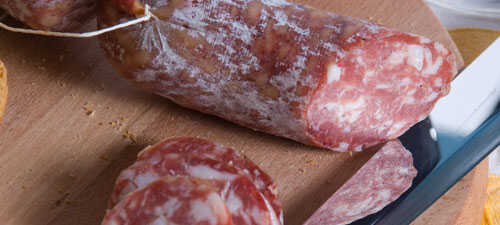
Cacciatore It means hunter in Italian and originated from the consumption of this salami during hunting, as it was easy to transport and did not spoil. It is usually 15 to 18 centimeters long and is cured with spices, wine and herbs. It's great to accompany a good cheese and Italian bread.O cacciatore salami It is a fermented salami that is relatively easy to make, but can be challenging due to temperatures and humidity. It is thin, embedded in pork casing that facilitates the curing/drying process. Thicker salamis usually use beef casing or collagen casing, which are widely used in commercial meatpacking salami. You can cure this salami in two weeks, but ideally you should wait at least a month to get a better result.
You can change the seasonings however you prefer, we just recommend not changing the salt, curing salt and sugar, which are the key ingredients in the production process.
Environment and utensils
- A humidifier or a place with air humidity close to 85% to ferment the salami;
- A place to cure/dry the salami after fermentation, preferably with humidity close to 80% and temperature between 12ºC and 14C;
- Collagen casings measuring 50mm, 30cm long, cut and stapled or tied on one side;
- A meat grinder with a coarse disc or a very sharp knife to finely chop the meat;
- A bagger/cannon or a funnel to stuff the salami.
Italian salami cacciatore recipe
- 1.8 kg of pork (shoulder, shank);
- 400 g of pork fat (belly);
- 40 g of salt;
- 20 g of sugar;
- 6 g of curing salt (6% of nitrite, 3% of nitrate and 93.75% of salt);
- 6 g of antioxidant based on sodium erythorbate;
- 2 g of powdered or dehydrated garlic;
- 1 g of cumin;
- 3 g of black pepper;
- 3 g of sweet paprika;
- 0.1 g of starter culture (lactic acid bacteria);
- 60 g of water;
- 60 g of red wine.
Preparation of Italian cacciatore salami
- Refrigerate the meat and fat for one hour. Preferably leave it in the freezer for a while so that it is almost frozen (4ºC);
- Cut the meat and fat into approximately 2 cm cubes. Remove as many nerves as you can;
- Mix the meat, fat, seasoning, salt and curing salt and refrigerate again for one hour. It is essential to always keep it well refrigerated so that the fat does not melt during the process;
- Grind using a coarse disc or chop very finely, about half a centimeter;
- Add the starter culture to the water and leave for 5 minutes;
- Remove the meat from the refrigerator and place it in the mixer (preferably orbital with a flat paddle), add the starter culture mixed with water and wine, mix at low speed for 2 minutes or until the mixture becomes sticky;
- Place the mixture in the sausage bagger and fill the casing. Leave some space to tie the end with string;
- Pierce any air bubbles that appear with a fine needle;
- Now you will need to start fermenting the added starter culture. For the process to occur it is necessary to maintain high humidity, hang and use a humidifier to maintain humidity in the environment;
- Leave for 24 to 48 hours. This moment is important because the starter culture must prosper by preventing other colonies from proliferating;
- At the end of fermentation, start curing/drying in a cold environment (between 12ºC and 14ºC) and with medium humidity (between 70% and 85%), but not completely dry. Let it dry for 2 to 6 weeks before trying it;
- The salami will be ready when it loses between 30% and 40% of its initial weight.
- Store in the refrigerator or vacuum-packed in the freezer.

-
 Curing salt 1R$ 8,00
Curing salt 1R$ 8,00 -
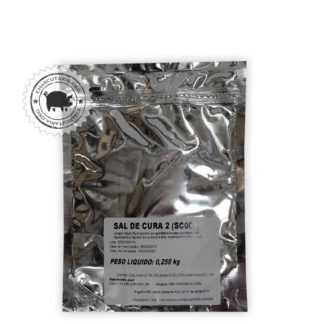 Curing salt 2R$ 8,00
Curing salt 2R$ 8,00 -
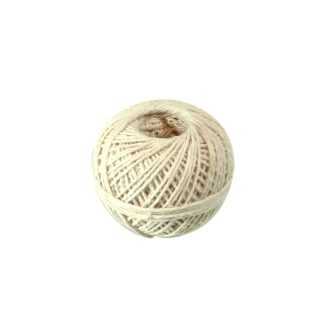 Culinary twineR$ 7,90
Culinary twineR$ 7,90 -
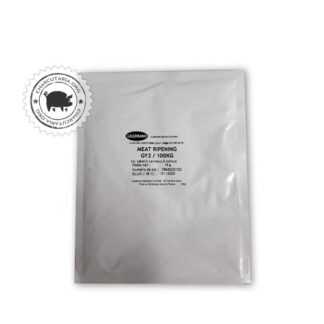 Starter CultureR$ 69,90
Starter CultureR$ 69,90 -
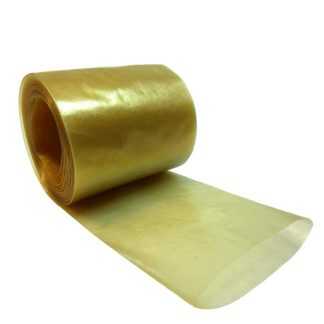 Collagen casing 45mm roll 5 meters salamiR$ 25,00
Collagen casing 45mm roll 5 meters salamiR$ 25,00 -
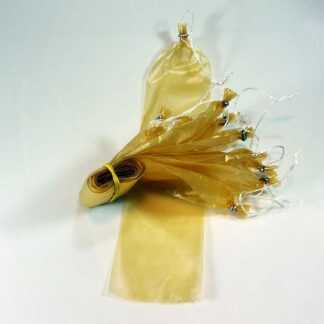 Salami collagen casing 45mm 10 units tiedR$ 22,00
Salami collagen casing 45mm 10 units tiedR$ 22,00 -
 Collagen casing 80mm cup and salamiR$ 29,90
Collagen casing 80mm cup and salamiR$ 29,90 -
 Salami collagen casing 50mm 10 units tiedR$ 24,00
Salami collagen casing 50mm 10 units tiedR$ 24,00 -
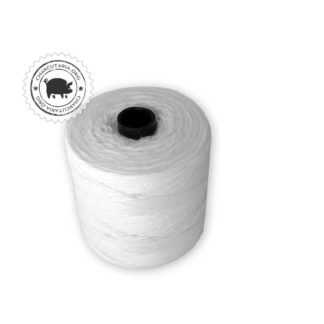 Polyester culinary twineR$ 16,00
Polyester culinary twineR$ 16,00 -
 Edible collagen 21 casing for sausages and sausagesR$ 19,00
Edible collagen 21 casing for sausages and sausagesR$ 19,00 -
Product on sale
 Mold culture mold 600 Penicillium NalgiovenseOriginal price was: R$ 129,00.R$ 119,90Current price is: R$ 119,90.
Mold culture mold 600 Penicillium NalgiovenseOriginal price was: R$ 129,00.R$ 119,90Current price is: R$ 119,90. -
 Salami collagen casing 50mm roll 5 metersR$ 29,00
Salami collagen casing 50mm roll 5 metersR$ 29,00


Hello everything is fine? What is the weight, on average, of a finished Italian salami recipe?
Hello, Leticia. A commercial salami will weigh, on average, 300g. But the final weight varies depending on the diameter of the casing used and the maturation time. The more matured the salami is, the more water it loses, consequently the lighter it will be.
Does not use beef (beef)????
This salami only uses pork.
Hello! It seems that there is an error in the amount of culture indicated in the recipe. Wouldn't the correct proportion given the indicated proportion be 0.3g of culture instead of 1g? Or was I mistaken?
Hi Thiago. It varies depending on the culture, I don't remember which one was used in this recipe. The ideal is to always follow the proportion indicated on the packaging of the product purchased. Excess is waste, but it doesn't get in the way because the proliferation of the culture is limited by the amount of sugar in the recipe, which regulates the acidity. I will reduce the recipe to stay in the most common proportion of crops currently available on the market. Thank you for the warning.
I would like to know if red wine is smooth or dry?
Dry red wine.
thank you very much
Good afternoon,
If the cacciatore salami was taken on hunts precisely because it didn't spoil, it's because I have to keep it refrigerated or even in a vacuum (in a refrigerator) after it's ready.
Couldn't it be left (without damaging its longevity) hanging in the kitchen or in another protected place?
Thanks
Hi Jerry. Yes, this type of product can be left hanging for a long time. But it generally lasts longer in colder environments. Brazil in general is much warmer than the European average, where the products were initially designed.
Good afternoon. I'm making refrigerated salami. It's already been built for 30 days and has already lost just over 30% of weight. He's been enjoying himself, from the outside in. But the crumb is taking a long time to compact. Is there anything that can be done to speed up the process a little more, so that it heals completely?
Hi, I would like your help, these are my first salamis, they are 9 days old, I used yakult in the dough, but I'm worried because the white mold is taking a while to come off. There are some that have a hint of hairy gray mold, I think. Look at the photo please. What do I do, wait a little longer and see? Do I burrifo yakult outside the salami? How do I clean salamis with bad mold?
Hi Fabio, clean the salami by rubbing a cloth soaked in brine – 200ml of water + 20g of salt). Clean whenever this type of mold appears. Regarding white mold, yakult does not promote this type of mold, yakult is a lactic acid bacteria that will help protect it through acidification. White mold is promoted by another type of culture, which is mold penicilium culture. What is this product: Penicillium Mold Culture
How long does it take to deliver in mg? CEP 30642310 do you charge shipping?
For CEP 30642-310, shipping by Carrier (6 to 7 days) is R$ 19.35. It may vary depending on weight.
Good afternoon, I'm going to make salami for consumption, do you have culture for me to buy?
Yes, we have both the starte culture and the white fungus to protect against other molds: https://charcutaria.org/categoria-produto/culturas-starter/
Good afternoon, do you have a culture for salami?
Yes we do, access https://charcutaria.org/categoria-produto/culturas-starter/
I saw variants of salami cacciatore recipes on the internet, mainly with meat. One of them is 60% pork and 10% cup and a third, 100% pork cup.
Did you simplify or did the others undergo changes?
Still….my fermentation chamber has been around 26 degrees, with humidity of 80%. Could this higher temperature harm fermentation?
Good afternoon,
How do I know that a salami has fermented and is ready to cure?
Does it release any smell during fermentation?
Thanks.
Don't you have a video of this salami?
Hi Fernando. No, this was not filmed. At the time we didn’t publish on YouTube yet.
We have these two with video:
https://charcutaria.org/receitas/salame-artesanal-feito-na-geladeira/
https://charcutaria.org/receitas/salame-de-cordeiro/
Hello. This should be my next recipe. In my greenhouse, I don't have a problem with humidity as I use a humidifier but the temperature reaches 26ºC. Is there any problem with it being a little higher than recommended?
Hi Fernando, this salami is very tasty! At this temperature the chance of contamination occurring is much greater. What you can do to minimize the risks is to add a good percentage of salt – close to 3% – and a good dose of wine to acidify. Another suggestion would be to cold smoke for 2 or 3 hours immediately after bagging. Smoking also helps with protection. Hugs!
My Salami will not culture Stater Meat Lyocarne Salame Copa, it is turning a dark brownish color and hard, after curing in the refrigerator. Why does it happen?
Hi Claudemir. What was this process like in the refrigerator? Did you stuff the salami dough into the collagen or natural casing and hang it in the fridge? Did you use any other casing or just the casing? Did you measure the temperature or humidity inside the refrigerator?
Take a look at this post and video about salami made in the fridge.
Dear Eduardo, how can I get the taste of Italian salami close to what is sold in the market? Thanks.
José, in general it is a combination of pork (70% to 80%), fat (20% to 30%), salt (2.5% to 4%), nutmeg, garlic, sugar, black pepper and some add monosodium glutamate. There may be variations, but this is the basis. We sell a seasoning that has this base, if you want to try it https://charcutaria.org/produto/tempero-para-salame/
Hello colleagues, I'm going to try to make this salami using Yakult. Can I add wine + Yakult or is it one or the other? Thanks!
You can use the wine more for its flavor as the acidification is guaranteed by the lactic acid bacteria in the yakult. Don't forget to add a little sugar so the bacteria have something to consume to generate lactic acid.
Thanks for the tip, friend Eduardo. So as a test I will put the amount of the recipe in Yakult, healing salt2 and antioxidant and I will only insert 50% of the amount of wine. A hug!
Hello Eduardo, even following the recipe using 10ml of Yakult per kg and a fermentation environment at 22~24º I was unable to obtain a product with white mold on the exterior. Maybe you can't even do it without an actual culture, right?? Could the fact that it has been fermenting for 72 hours, without the appearance of mold, compromise the product? Thank you for your attention.
Recipes are always expressed in weight, (grams) this is the correct way, a recipe cannot start in grams and end in household measurements such as spoon, cup, glass etc, everything has to be in grams, even water and wine.
WHAT CAN WE REPLACE THE STARTER WITH?
Hi Jefferson, you can do without the starter culture if you are going to use wine or another acidifier in the recipe.
HELLO
WHAT CAN WE REPLACE THE STARTER WITH AND WHAT WE HAVE AT HOME, COULD IT BE MILK?
Hi Jefferson, you can do without the starter culture if you are going to use wine or another acidifier in the recipe. It just won't have the additional flavor and aroma left by the starter culture. Milk is not recommended, many use yakult, which is a lactic culture (generates lactic acid).
HELLO!
WHAT CAN BE PUT IN PLACE OF THE STARTER AND WHAT DO WE HAVE AT HOME?
Hi Jefferson, you can do without the starter culture if you are going to use wine or another acidifier in the recipe. It just won't have the additional flavor and aroma left by the starter culture.
Where to buy starter culture, salt for curing
Hello Marco Antonio, click on the following links to buy CURING SALT It is STARTER CULTURE.
This is the third time I've tried to make salami with other recipes, now I followed this one, but I still have doubts: here it says to use a humidifier for 80% humidity and in other recipes it's asked to leave a fan on 24 hours to dry the salami. Can anyone explain to me if there are many ways to make salami??????
Hi Benetoli, there are types of salami with different processes. Typical colonial salamis from southern Brazil, for example, spend very little time curing and are still soft. There are other salamis that undergo smoking. For this specific recipe, of Italian origin, humidity is maintained so that weight loss (evaporation) is slow and gradual. If the environment is too dry, the exterior of the salami will dry out and harden. Slow ventilation must be maintained throughout the process, but not a strong fan, it just has to be slow air movement. If you haven't started production yet, I recommend that you follow the recipe I made from Tuscan Finocchiona Italian Salami. Feel free to ask if you have any questions during the process. Hugs!
This website is very good. I'm so happy to have found him. I'm in the mood to make homemade sausages and salami and I'm full of information right now. Still, there were some very particular doubts: I have an underused cellar here. She is dark inside. Would it be a suitable environment to store salamis, when turned on? Would it already guarantee the necessary humidity for manufacturing? Regarding humidity, I think that just because I live in Salvador there is reasonable humidity in the air, although the climate here is moderate to hot. Do you know what I would do to regulate this humidity if I use the cellar? I'm already grateful to you, but I'll be even more so if I get any response. Hugs!
Hi Luciano, I have an analog hygrometer that I leave inside the cellar monitoring it. I regulate humidity by adding or removing pots/cups with water and salt (to avoid mold). If the humidity is low, I place more pots of water in the cellar and vice versa. It's a very simple and cheap way to start experiments. In larger environments it is possible to use a humidifier, but in a cellar there is no space for this and the solution in pots has solved the problem. Research the air humidity forecast in Salvador, if it is constantly between 70% and 80% you won't even need to worry about it. Good luck and if you have any questions, just let me know and I'll try to help with whatever I know. A big hug.
Thank you very much, Eduardo! In fact, the air humidity in Salvador seems to be good for our purposes, regulating around 75% to 80%. I now have new doubts: According to the recipe, initially, it is necessary to leave the salami for 24h to 48h in a very humid environment, but it doesn't say whether it has to be cold or not. What is the ideal temperature and humidity for this environment? I want to know this to understand whether or not I should put the salami in the cellar right away. After this first stage, the salami goes to a cooled environment, with medium humidity. What would be the ideal humidity at this time as well? Finally, I explain that I'm going to try to make it with yakult and, during the process, I'm going to sprinkle it with brie cheese water. And I still need to improvise a bagging machine here. hahaha
Hugs!
Luciano, the first 48 hours are left at room temperature for the initial fermentation of the dairy culture to occur (yakult in this case). At this stage the temperature should generally be between 20 and 25 degrees, but as it should be hotter than that I recommend leaving it for between 12 and 24 hours. The higher the temperature, leave less time at this stage. Then you can transfer it to the cellar with a temperature of 12 to 15 degrees and humidity of 70% to 80% and leave it like that until the end. To add small amounts, you can try using a large funnel and the handle of a wooden spoon to tamp it down! A big hug, then tell us how it turned out.
Wonderful, Eduardo! Thanks a lot for the help. I will definitely get back to you. Hugs!
Congratulations on the explanations, all well put together and responding well to those who ask. I'm new to charcuterie and I wanted to make traditional salami to sell. I lived close to a sausage factory that made them and delivered them immediately, meaning they didn't go through the lengthy curing process. Do you have a recipe for this type of salami?
Hello Afonso, there are salamis that cure quickly, but they are moister and softer. In the southern region, they are widely consumed as colonial salami. Take a look at this basic recipe quick salami. Another thing is that the smaller the size, the faster it will dry.
Sirs
I want to use salami with yakult, I tried it for the first time with Kraki products, I bought them all for Italian Salami and I didn't have good results, a slimy fungus proliferated and at the end of 20 days some germs appeared which I certainly discarded the salami for consumption.
I would like you to provide me with a step-by-step guide for this salami above, changing the culture to yakult, which I find easier to locate.
If you can help me by email or even whatz I would appreciate it.
pri_msr@yahoo.com.br
(67)992368094.
Very good!!!
Congratulations to the site administrator, a pearl in the world of sausages.
Good morning . I really enjoy the charcuterie news posted here. However, I would like to make a comment on this recipe. It was said to put 20 grams of T-SPX culture (or other brand and measure recommended by the manufacturer); in this recipe. This quantity is for 100 kg of meat and not the quantity proposed here. abs
Hi Mauricio, it's true, for the culture specified in the recipe this quantity is really very large, I'm going to reduce it but still keep a high margin to be safe. I'm going to take advantage and add the yakult option, which has already been well commented on as a substitute for culture. Thank you and big hugs!
Good morning!
Your website is truly to be congratulated! I made your homemade bacon recipe and it was wonderful.
In the case of salami, to use yakult, what would be the proportion?
Hi Alexandre, I'm glad you approved the recipe! I really like artisanal bacon. Regarding yakult, the proportion you can use is 1 pot for every 2 or 3 kilos of dough. A big hug!
I want to use salami with yakult, I tried it for the first time with Kraki products, I bought them all for Italian Salami and I didn't have good results, a slimy fungus proliferated and at the end of 20 days some germs appeared which I certainly discarded the salami for consumption.
I would like you to provide me with a step-by-step guide for this salami above, changing the culture to yakult, which I find easier to locate.
If you can help me by email or even whatz I would appreciate it.
pri_msr@yahoo.com.br
(67)992368094.
From what I noticed, the problem is not with the recipe, but with the infestation by some unwanted fungus. I suggest that you clean the maturation chamber with bleach to eliminate the mold present, then purchase and spray the product and the environment with a specific mold culture, such as Chr. Hansen's mold-600. Yakult replaces the lactic bacterial culture (such as Bactoferm T-SPX) and can be mixed into the dough, along with the seasonings, one pot for every 2 or 3 kilos of meat.
Good evening, I have a question. Is there a video with a guy talking about how to cure salami better in the summer?
youtu.be/_5SD3dnG60o
And he won the title best salami in Rio Grande do Sul
Hi Armando, he must make an excellent colonial salami typical of the southern region of the country. It is still a very raw, soft, moist product. In summer it loses water faster due to the heat, but this type of salami only goes through the chemical process of curing using nitrate and sodium and not the long maturation of the more rigid salami that comes from the European winter.
Can it be made without curing salt?
Everaldo, for personal consumption it can be made without curing salt, for commercialization the regulations require curing salt.
friend, I need 45 and 60 gauge collagen casings
Where can I find it at a price that's worth it?
Have you found the collagen casings for salami in the sizes you want?